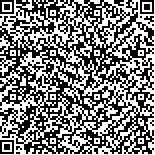| This article has been:Browse 1173Times Download 2527Times |

scan it! |
|
|
| DOI:10.13522/j.cnki.ggps.2022565 |
|
| Influence of Sediment Particle Size Distribution on Intermittent Infiltration of Water under Surge Irrigation |
|
WEI Jiaxing, FEI Liangjun, LIANG Shuang, JIE Feilong
|
|
State Key Laboratory of Eco-hydraulics in Northwest Arid Region of China, Xi’an University of Technology, Xi’an 710048, China
|
| Abstract: |
| 【Objective】Water sourced from the Yellow River in China, which has been extensively used for irrigation in the northern irrigation districts of the country, is characterized by high sediment content. This paper aims to investigate the influence of sediment particle size distribution on water infiltration under surge irrigation.【Method】The infiltration tests encompassed four treatments with sediment content being 3%, 6%, 9%, and 12%, respectively. Each sediment treatment included four particle gradings labeled as A, B, C, and D, respectively. In each infiltration test, we meticulously measured both the infiltration rate and the variation in infiltration over time. 【Result】The relationship between cumulative infiltration and time can be described by the Philip and Kostiakov models, regardless of sediment content and particle grading. As the number of irrigation cycles increased, the parameters K and α in the Kostiakov model, as well as the parameters S and A in the Philip model, all exhibited a declining trend. 【Conclusion】In comparison to the infiltration of clean water, the infiltration depth of sediment-water was inversely related to the presence of physically cohesive particles. Conversely, when the infiltration depth was the same, soil water content was negatively correlated to the quantity of physically cohesive particles in the water. |
| Key words: surge irrigation; intermittent infiltration; laboratory test; Philip infiltration model; Kostiakov infiltration model |
|
|